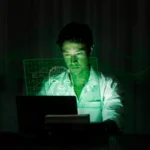The rise of polyworking—a trend where individuals juggle multiple jobs or freelance gigs—is becoming a serious cybersecurity concern, particularly among Gen Z workers. According to new research from Kaspersky, nearly half (48%) of Gen Z professionals hold side jobs, making them the most active generation in this growing work style.
However, this multitasking across platforms, tools, and client communications is increasing their exposure to cyber threats. Kaspersky highlights that managing multiple roles often involves using several communication apps, email accounts, and project tools—all of which open more doors for hackers.
Cybercriminals are exploiting this complexity through phishing emails, malicious calendar invites, and deceptive chat messages masked as legitimate workplace interactions. Evgeny Kuskov, a cybersecurity expert at Kaspersky, notes that switching between tasks from different jobs across various apps increases the chance of human error. “It’s only a matter of time before something slips,” he warns.
Over the past year, Kaspersky detected more than six million cyberattacks disguised as work tools. Zoom alone accounted for 3.8 million, while Excel, Outlook, OneDrive, and Teams were also heavily targeted. In one case, attackers posed as a Zoom update, luring users into downloading malware.
Freelance platforms like Fiverr, Upwork, LinkedIn, and Behance have also become popular channels for phishing scams. Kaspersky reports over 650,000 phishing attempts targeting LinkedIn users in the past year.
The study also reveals poor security practices among some Gen Z polyworkers, such as reusing simple passwords and using a single personal device for all gigs—often without proper data separation. Sensitive corporate information often ends up on unsecured devices or public cloud platforms like Google Drive or Dropbox.
Additionally, some workers install unauthorized tools or browser extensions—referred to as “shadow IT”—to boost productivity. These often come with unknown security risks or unclear data policies.
Kuskov emphasizes that this constant digital juggling act creates cognitive overload, making it easy to miss red flags. “It’s not carelessness,” he explains. “It’s the volume of digital demands pulling their attention in every direction. But in cybersecurity, even one small mistake can have major consequences.”
Stay ahead of emerging cybersecurity threats. For the latest insights and updates on cloud security, follow SOC News.
News Source: ITPro.com







